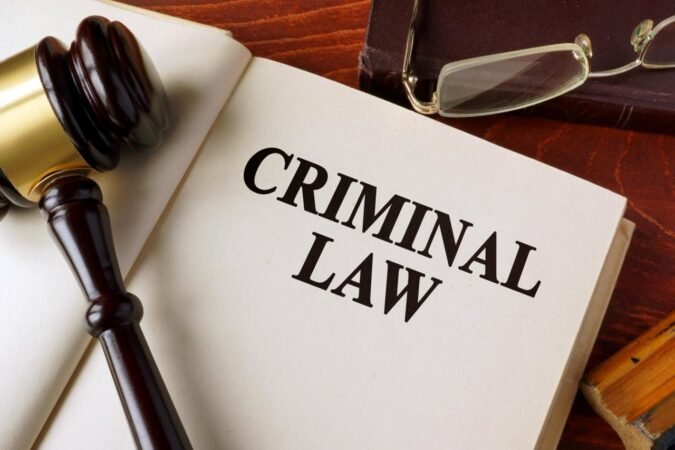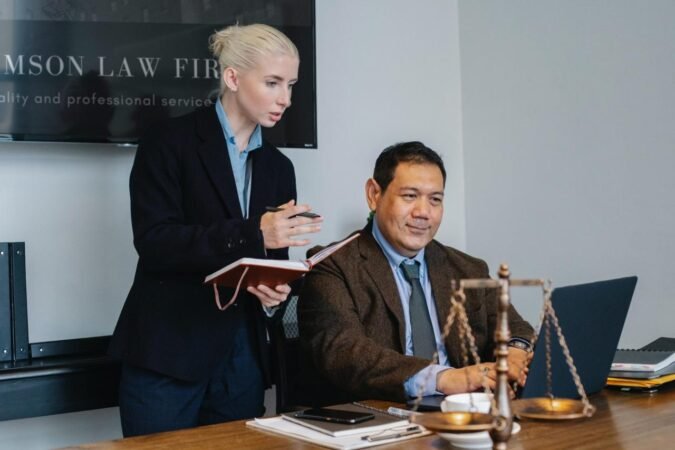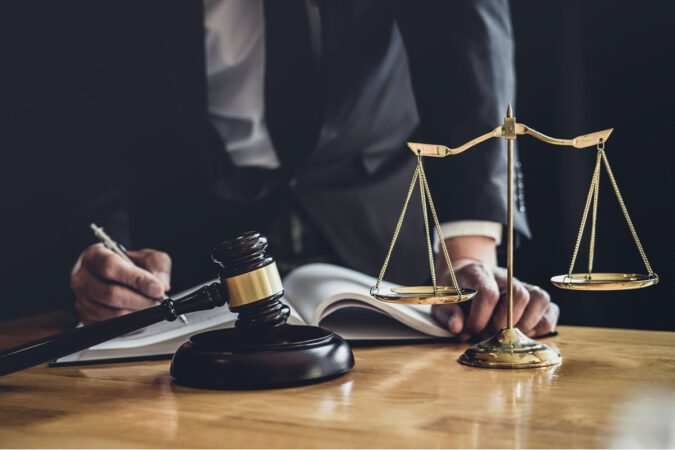
What is martial law? It’s a state of emergency where military authority takes over civilian governance, often in times of crisis or unrest. From ancient Rome to the modern day, martial law has been invoked in diverse situations, ranging from natural disasters to political upheavals. While it may seem like a straightforward concept, understanding the nuances of martial law requires delving into its historical roots, legal frameworks, and the delicate balance between security and individual liberties.
This article explores the concept of martial law, examining its origins, legal basis, powers, and historical examples. We’ll also discuss the arguments for and against its imposition, considering the ethical and legal challenges it presents in the 21st century. By understanding the complexities of martial law, we can better assess its potential role in navigating modern crises.
Definition of Martial Law
Martial law is a temporary suspension of ordinary law and civil rights, where military authorities take control of a region or country. It is typically imposed during times of emergency, such as war, natural disasters, or civil unrest.
Historical Origins of Martial Law
The concept of martial law has roots in ancient times. The Roman Republic, for instance, had a system of military rule called “imperium militiae” which allowed military commanders to exercise extraordinary powers during times of war. During the Middle Ages, European monarchs often relied on martial law to suppress rebellions or maintain order during periods of unrest.
Types of Martial Law
Martial law can take different forms, depending on the circumstances and the goals of the authorities imposing it. Here are some examples:
- Military Occupation: This type of martial law is imposed when a military force occupies a territory, such as during a war or after a successful coup. The occupying force takes control of all aspects of governance and may impose strict regulations on the local population. The occupation of Iraq by the United States after the 2003 invasion is a prime example of this type of martial law.
- Emergency Powers: Governments may declare martial law in response to natural disasters, such as earthquakes or hurricanes, to provide emergency relief and maintain order. In these cases, the military may be tasked with providing essential services, such as food, water, and medical care. The government of New Orleans declared martial law in the aftermath of Hurricane Katrina in 2005.
- Civil Unrest: Martial law may also be imposed to quell civil unrest or riots. The military may be deployed to restore order, protect property, and arrest those involved in the unrest. In 1992, Los Angeles declared martial law after the Rodney King riots.
Legal Basis and Authority
The imposition of martial law is a serious measure that significantly impacts the rights and freedoms of citizens. Its legal basis and the authority to declare it are complex and vary significantly across jurisdictions.
The legal framework governing martial law is rooted in constitutional law and legislation specific to each country. It defines the conditions under which martial law can be declared, the powers granted to the executive branch during its implementation, and the limitations placed on those powers.
The Role of the Executive Branch
The executive branch, typically represented by the president, prime minister, or governor, is usually vested with the authority to declare martial law. This authority is often derived from the constitution or specific legislation. However, the specific procedures and requirements for declaring martial law vary across jurisdictions.
For instance, in the United States, the president has the authority to declare martial law in cases of insurrection or invasion, but this power is subject to limitations and checks. The Constitution grants Congress the power to declare war and regulate the military, providing a check on the president’s authority to impose martial law. Additionally, the judiciary can review the legality of martial law declarations and the actions taken under them.
Limitations and Checks on Executive Power
While the executive branch may have the authority to declare martial law, its power is not absolute. Several limitations and checks are typically in place to prevent the abuse of this extraordinary power.
- Constitutional Limitations: The constitution sets forth fundamental rights and freedoms that cannot be completely suspended even under martial law. For example, the right to life, liberty, and security of person are often considered non-derogable rights.
- Legislative Oversight: In many jurisdictions, the legislature must approve or ratify the declaration of martial law, providing a check on the executive branch’s power. Parliamentary oversight committees may also monitor the implementation of martial law and ensure that it is being exercised within legal boundaries.
- Judicial Review: The judiciary plays a critical role in ensuring that the declaration and implementation of martial law comply with the constitution and the rule of law. Courts can review the legality of martial law declarations and the actions taken under them, ensuring that they are not arbitrary or excessive.
- Time Limits: Many jurisdictions impose time limits on the duration of martial law, requiring the executive branch to seek legislative approval for any extensions. This helps prevent the indefinite suspension of civil liberties.
- International Law: International law, particularly human rights law, sets minimum standards that must be respected even in times of emergency. For example, the International Covenant on Civil and Political Rights (ICCPR) requires states to uphold certain fundamental rights and freedoms, even under martial law.
Powers and Restrictions Under Martial Law
Martial law grants the government extraordinary powers, significantly altering the balance between individual rights and state authority. These powers are intended to restore order and security during emergencies, but they also raise concerns about potential abuses and the erosion of civil liberties.
Powers Granted Under Martial Law
The powers granted to the government under martial law vary depending on the specific circumstances and the legal framework of the jurisdiction. However, some common powers include:
- Suspension of Civil Liberties: The government may suspend certain fundamental rights and freedoms, such as freedom of speech, assembly, and movement, to maintain order and prevent the spread of unrest. This can involve curfews, restrictions on public gatherings, and censorship of media.
- Military Control: The military may be deployed to enforce law and order, taking over the role of civilian law enforcement agencies. This can include conducting searches, arrests, and even imposing military tribunals.
- Control of Essential Services: The government can assume control of essential services, such as transportation, communication, and healthcare, to ensure their continued operation during a crisis. This can involve requisitioning private property or assets.
- Price Controls: The government may impose price controls on essential goods and services to prevent profiteering and ensure affordability for the public.
- Emergency Powers: The government may be granted broad emergency powers, such as the authority to detain individuals without trial, to impose martial law in specific areas, and to regulate the flow of information.
Limitations on Individual Rights and Freedoms, What is martial law
The declaration of martial law significantly restricts individual rights and freedoms, raising concerns about the potential for abuse and the erosion of democratic principles. These limitations can include:
- Freedom of Speech and Expression: The government may restrict freedom of speech and expression to prevent the spread of misinformation or incite violence. This can involve censorship of media, restrictions on public gatherings, and limitations on online communication.
- Freedom of Assembly: The government may restrict freedom of assembly to prevent protests or gatherings that could pose a threat to public order. This can involve curfews, restrictions on public gatherings, and the use of force to disperse crowds.
- Freedom of Movement: The government may restrict freedom of movement to prevent the spread of unrest or to facilitate security operations. This can involve curfews, checkpoints, and restrictions on travel.
- Right to Due Process: The government may suspend the right to due process, allowing for the detention of individuals without trial or the use of military tribunals. This can raise concerns about the potential for arbitrary arrests and unfair trials.
- Right to Privacy: The government may restrict the right to privacy to facilitate security operations or to prevent the spread of information. This can involve surveillance, wiretapping, and restrictions on communication.
Comparison of Powers Under Martial Law and Normal Times
The powers of the government under martial law are significantly expanded compared to those in normal times. In normal times, the government’s powers are limited by the constitution and the rule of law. However, under martial law, the government may have the authority to:
- Suspend constitutional rights: The government may suspend certain constitutional rights and freedoms, such as the right to due process, freedom of speech, and freedom of assembly.
- Overrule civilian law: The military may be empowered to enforce law and order, taking over the role of civilian law enforcement agencies.
- Control essential services: The government may assume control of essential services, such as transportation, communication, and healthcare.
- Impose restrictions on individual freedoms: The government may impose curfews, checkpoints, and restrictions on travel and communication.
Historical Examples of Martial Law
Throughout history, martial law has been imposed in various situations, often in times of crisis or instability. Examining these instances provides insights into the reasons for its implementation, its effects, and its enduring legacy.
The American Civil War
During the American Civil War (1861-1865), President Abraham Lincoln declared martial law in several Southern states, including Maryland, Virginia, and Louisiana. The Union government argued that this was necessary to suppress Confederate rebellion and maintain order. The declaration of martial law granted military authorities extensive powers, including the suspension of habeas corpus, the right to arrest and detain individuals without due process, and the imposition of military tribunals.
- The suspension of habeas corpus allowed the Union government to detain individuals suspected of supporting the Confederacy without formal charges or trial. This was particularly controversial, as it violated the principle of due process and led to the arbitrary imprisonment of civilians.
- The imposition of military tribunals allowed the military to try civilians for offenses that would normally be handled by civilian courts. This raised concerns about the fairness and impartiality of these proceedings, as military courts were often biased in favor of the Union.
While the Union government argued that martial law was necessary to maintain order and suppress the rebellion, critics argued that it was an overreach of power and violated fundamental civil liberties. The debate over the legality and legitimacy of martial law during the Civil War continues to this day.
Arguments for and Against Martial Law

The imposition of martial law is a complex and controversial issue, often arising during times of crisis or instability. While it can be seen as a necessary measure to restore order and protect public safety, it also carries significant risks to individual liberties and democratic principles. This section examines the arguments both for and against the use of martial law, highlighting the different perspectives and the potential consequences of such a decision.
Arguments in Favor of Martial Law
Proponents of martial law argue that it can be a vital tool for maintaining order and security during times of crisis. They contend that the extraordinary powers granted to the military under martial law can be essential for addressing situations that overwhelm civilian authorities.
- Restoration of Order and Security: Martial law can be used to suppress unrest, riots, or other forms of public disorder that threaten public safety. The military’s authority to impose curfews, restrict movement, and enforce order can help restore stability and prevent further violence.
- Protection of Public Safety: In situations where civilian law enforcement is overwhelmed, martial law can provide the necessary resources and authority to protect citizens from threats such as natural disasters, terrorist attacks, or outbreaks of disease.
- Emergency Response: Martial law can facilitate a swift and coordinated response to emergencies by allowing the military to take control of essential infrastructure, such as transportation, communication, and healthcare systems.
Arguments Against Martial Law
Opponents of martial law argue that it represents a dangerous erosion of individual rights and democratic principles. They contend that the extraordinary powers granted to the military under martial law can be abused, leading to human rights violations, suppression of dissent, and the erosion of civil liberties.
- Erosion of Civil Liberties: Martial law often suspends fundamental rights such as freedom of speech, assembly, and movement, creating a climate of fear and repression.
- Potential for Abuse: The military’s authority under martial law can be subject to abuse, leading to arbitrary arrests, torture, and other human rights violations.
- Undermining of Democracy: Martial law can undermine democratic institutions and processes by concentrating power in the hands of the military, potentially leading to authoritarianism or military rule.
Comparison of Perspectives
The arguments for and against martial law reflect different priorities and concerns. Proponents emphasize the need for order and security, arguing that martial law can be a necessary evil in times of crisis. Opponents prioritize individual rights and democratic principles, fearing that martial law can lead to abuses and the erosion of fundamental freedoms.
The decision to impose martial law is a complex one, requiring careful consideration of the potential benefits and risks. It is essential to weigh the need for order and security against the potential impact on individual rights and democratic principles.
Modern-Day Considerations: What Is Martial Law

The concept of martial law, once primarily associated with historical conflicts, has taken on new dimensions in the 21st century. The rise of global interconnectedness, technological advancements, and evolving societal dynamics have created unique challenges and opportunities for the potential application of martial law.
Potential Scenarios for Martial Law in the 21st Century
The 21st century presents a complex landscape where the traditional justifications for martial law may be challenged or adapted. Potential scenarios where martial law might be considered include:
- Natural Disasters: Large-scale natural disasters, such as hurricanes, earthquakes, or pandemics, can overwhelm existing infrastructure and emergency response capabilities. In such situations, authorities might consider imposing martial law to maintain order, enforce curfews, and expedite relief efforts.
- Cyberattacks: With the increasing reliance on technology, large-scale cyberattacks capable of crippling critical infrastructure, such as power grids or financial systems, could necessitate the implementation of martial law to protect national security and restore essential services.
- Civil Unrest and Political Instability: Prolonged civil unrest, fueled by political polarization, economic inequality, or social injustice, could escalate to a point where authorities resort to martial law to restore order and prevent widespread violence.
- Terrorist Attacks: In the aftermath of major terrorist attacks, governments may consider imposing martial law to enhance security measures, conduct investigations, and prevent further attacks.
Ethical and Legal Challenges of Imposing Martial Law in the 21st Century
The imposition of martial law in the 21st century presents a complex ethical and legal landscape. Several key challenges arise:
- Balancing Security and Civil Liberties: Martial law inherently involves the suspension of certain civil liberties, raising concerns about the potential for abuse and the erosion of fundamental rights. Striking a balance between ensuring security and protecting individual freedoms is a delicate and controversial task.
- Transparency and Accountability: The use of martial law requires transparency and accountability to prevent arbitrary actions and ensure that the measures are proportionate to the threat. Mechanisms for oversight and independent review are crucial to maintain public trust and legitimacy.
- International Law and Human Rights: The application of martial law must comply with international law and human rights standards. This includes respecting the principles of necessity, proportionality, and non-discrimination. Failure to adhere to these principles can lead to legal challenges and international condemnation.
Impact of Technology and Social Media on the Use of Martial Law
Technology and social media have significantly impacted the dynamics of martial law in the 21st century. These developments create both opportunities and challenges:
- Enhanced Surveillance and Information Control: Governments can leverage technology to monitor and control information dissemination during periods of martial law. This includes using surveillance technologies to track individuals and censor online content, potentially undermining freedom of expression and privacy.
- Citizen Mobilization and Resistance: Social media platforms can facilitate rapid communication and mobilization, enabling citizens to organize protests, share information, and challenge government actions. This can potentially hinder the effectiveness of martial law and create challenges for authorities.
- Increased Transparency and Accountability: Technology and social media can also empower citizens to document and expose abuses committed under martial law. This can contribute to greater transparency and accountability, making it more difficult for authorities to operate with impunity.
Final Conclusion

Martial law remains a controversial topic, with arguments both for and against its use. While it can offer a temporary solution to immediate threats, its potential to erode civil liberties and empower the military must be carefully considered. In a world increasingly reliant on technology and social media, the impact of martial law on communication and public discourse is a critical factor to assess. Ultimately, understanding the historical precedents, legal frameworks, and ethical considerations surrounding martial law is crucial for navigating its potential application in modern times.
Key Questions Answered
Who can declare martial law?
The authority to declare martial law varies by country. In some cases, it’s the executive branch, while in others, it might require legislative approval.
What happens to the constitution during martial law?
The extent to which the constitution is suspended during martial law also varies. Some countries maintain certain fundamental rights, while others grant the military broad authority.
Is martial law legal?
The legality of martial law is a complex issue. While it’s generally accepted in times of emergency, the specific legal framework and limitations differ from country to country.
What are some examples of martial law in recent history?
Recent examples include the imposition of martial law in Myanmar after the military coup in 2021, and the declaration of martial law in parts of the United States during the Civil War.
How long can martial law last?
The duration of martial law is typically determined by the severity of the crisis and the ability to restore order. However, there are no set time limits, and the potential for abuse exists.





